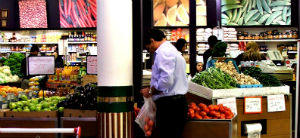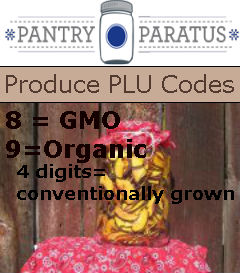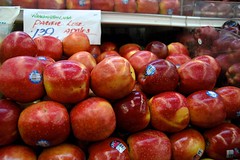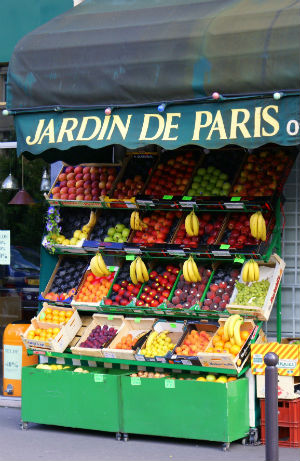Does the produce code on your fresh produce tell you if it has been genetically modified (GMO), if it has been grown conventionally, or if pesticides or insecticides were used?
Produce:
Does the Sticker Tell Me What I’m Buying?
We all want to believe that there is a system to navigate the aisles of the grocery store. We want to be healthy and to raise healthy families. Is that so wrong? We want transparency in our food system. We want to believe they are not lying to us and that we indeed have choices in a free market society.

The produce product codes are not mandatory but are consistent internationally; whether it is citrus fruit from Chile or white asparagus from Germany, you should be able to determine a few basics (“International federation for,” 2011):
1. Produce is given a code, randomly selected, within the 3000-4000 range. These are most likely “conventionally grown”.
2. A code can only be given to something fresh; if it has been cut or processed in any way it does not qualify under these rules.
3. The food must be marketed in more than one country, and that grower must sell, at minimum, with 25 retailers.
If it’s a 5 digit plu code, then a number was slapped onto the front of the randomly selected plu code to indicate whether it is organic or genetically modified.
- If the number starts with 8: Genetically Modified (GMO)
- If the number starts with 9: Certified Organic

I found http://www.plucodes.com/ . You can type the plu codes for produce straight into the database and it will reveal whatever information is attached to that code. Do not get your hopes up; you can only type in the main 4 digit plu code without the prefix number (if it has one). You will see little information beyond fruit speciation and color. You can also search by fruit or vegetable type. If you are an avid smartphone user, though, keep this site on the ready for those in-store questions!
Again, it must be stated that using plu codes for produce is a voluntary procedure, and nowhere in the process of initial application is the question asked about growing practices. The process is outlined like this…you send in the form with the attached letters of reference and photo. You wait until they’ve had their next quarterly meeting (where such decisions are made), and then you search their postings on the website to see if you made the cut—think high school tryouts. For all of the documents required (letters from 3 retailers, pictures, etc), no organic certification document was required. I am curious as to how and when the review process actually requests or uses this information.
Also, be sure to know what the irradiation symbol looks like, too. Imported citrus are often zapped.
Just know upfront that the code is not the best way to get something fresh, something local, something healthy. The best way? Visit your local farmer.
—-
As an aside, I was surprised at how many websites cited the same information about “8 means GMO, 9 means organic”, without asking the rebellious question, “who says?”. I even turned to Snopes who said that—indeed—this information on produce codes was kinda’ true but not really. Hmmm. It’s true (by the organization’s admission) but not necessarily provable. Does that help clear it up?
–Chaya
Reference:
International federation for produce standards . (2011). Retrieved from http://www.ifpsglobal.com/Home.aspx
Photo Credits:
Apples with PLU stickers– Want to try a code in the plu lookup site? This one was 4122, taken by Farmanac.


